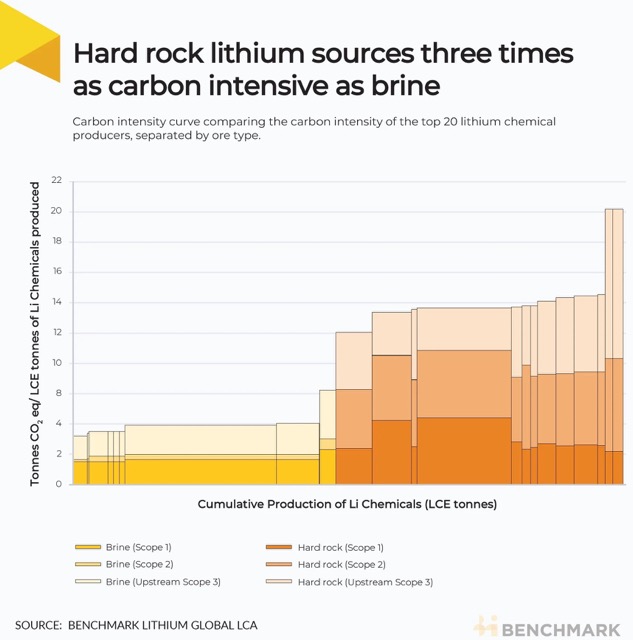As demand for electric vehicles and renewable energy storage solutions continues to rise, so too does the demand for lithium, a key component in the batteries that power these technologies. However, the methods used to extract lithium from the earth can have vastly different environmental impacts.
Hard rock vs. brine
Hard rock lithium mining involves extracting lithium from rocks that contain the metal. This is typically done through open-pit mining, which can involve blasting and excavating large amounts of rock. The process is energy-intensive, and can result in significant amounts of waste rock and tailings, which can contain toxic chemicals and heavy metals. Additionally, hard rock mining can require large amounts of water. This can be a problem in regions where water resources are already scarce. It is estimated that 60% of the total global mined lithium supply comes from using this method.
On the other hand, lithium can also be extracted from brine sources. This involves extracting lithium from underground brine pools. These can be found in areas such as salt flats and dry lakebeds, where water has evaporated over time, leaving behind mineral deposits. The brine can be pumped to the surface and then processed to extract the lithium. This typically requires less water and produces less waste than hard rock mining.
In terms of the carbon footprint of each method, a recent article from Benchmark Minerals states that “in almost every metric, lithium chemicals from hard rock sources are more environmentally damaging than those from brine sources.” Additionally, Olivia Lin, an analyst at Benchmark Minerals states, “Processing hard rock is a much more energy-intensive process than brine.”

Energyx’s approach
EnergyX’s portfolio of Direct Lithium Extraction (DLE) technology is the ideal solution for extracting lithium from brine sources. Since each brine around the world exists in geologically different locations and temperatures, they will naturally require their own approaches to extraction. Our suite of technologies and processes can be combined and specifically tailored to be brine agnostic – or, in other words, able to recover the most lithium from any brine source. The advantages of extracting lithium from brines align with our company’s core goals and ESG pledge. Our mission is to become a worldwide leader in the global transition to sustainable energy. We want every part of the energy supply chain to be sustainable. This is why we work with brine vs. hard rock, and are looking to make brine the main source of lithium production for the energy transition.
CONCLUSION
Ultimately, the choice between hard rock and brine lithium mining will depend on a variety of factors, including the location of the deposit, the availability of water and energy resources, and the environmental regulations in place. It is important to carefully consider the potential environmental impacts of lithium mining and to strive for sustainable and responsible practices that minimize harm to both people and the planet.

